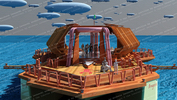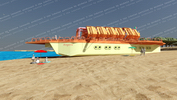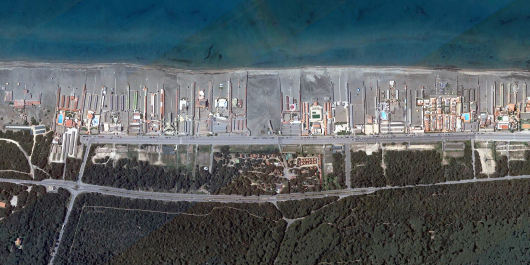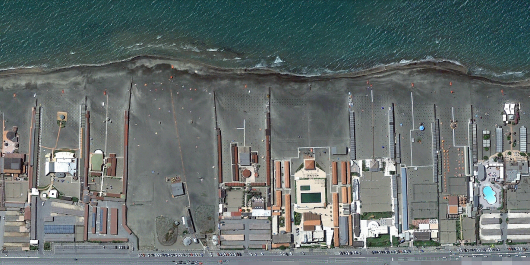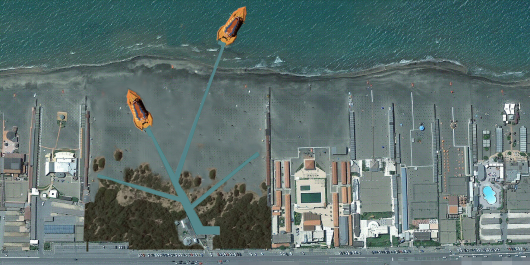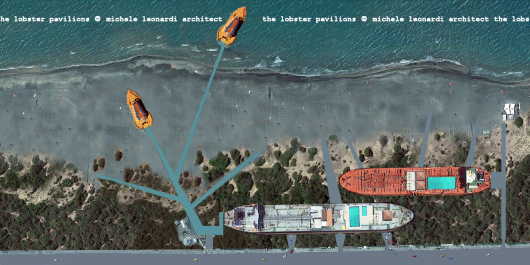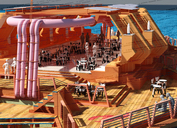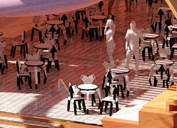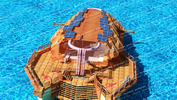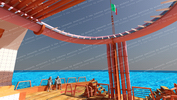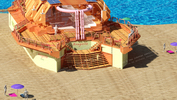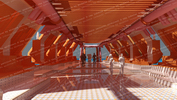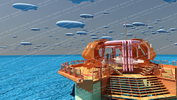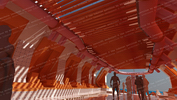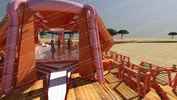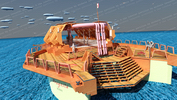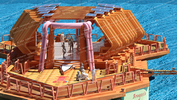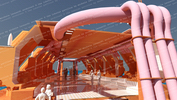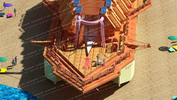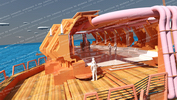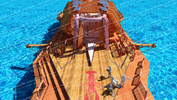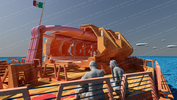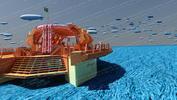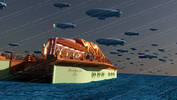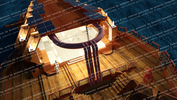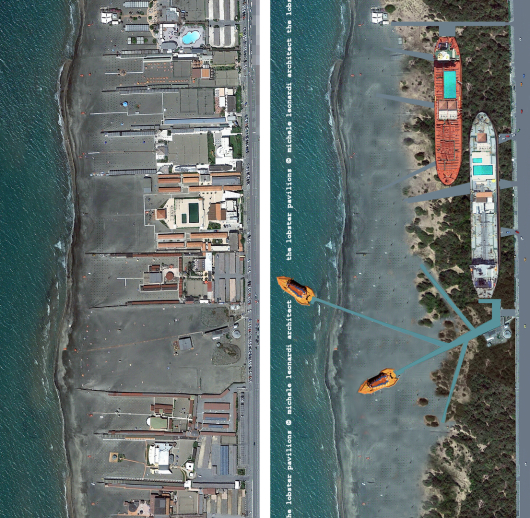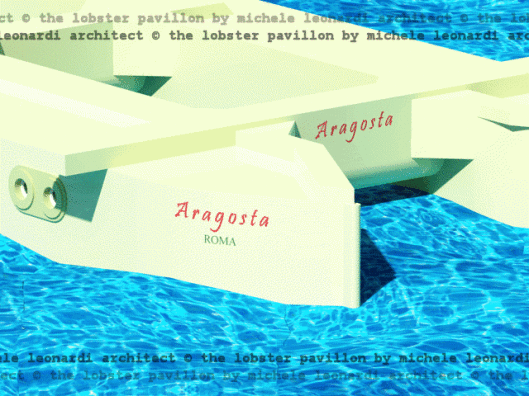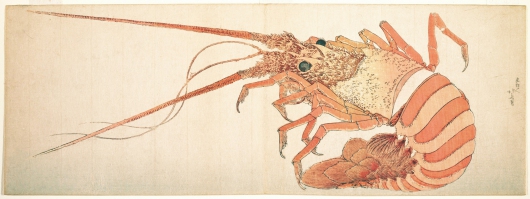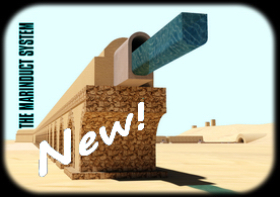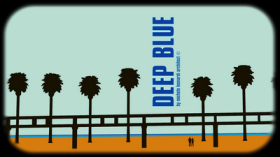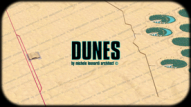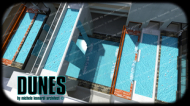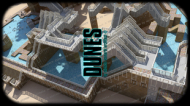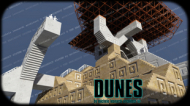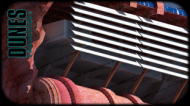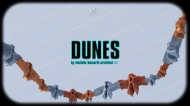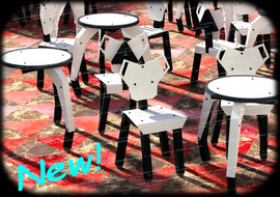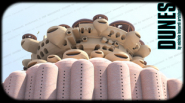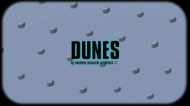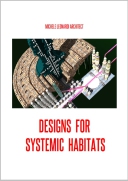The Lobster Pavilion
restaurant - piano bar - ice cream - dancing
in high definition
by Michele Leonardi architect © June 2016
0
Aerial images of a generic overbuilt beach (taken from Google Earth Pro).
0
1
The evolution of Lobster Pavilion system © by Michele Leonardi architect :
after the first step the overbuilt has disappeared.
The space for human beings is reborn. And now that makes sense.
2
The evolution of Lobster Pavilion system © by Michele Leonardi architect :
the final step, with the large disused ships brought ashore and
transformed into local multi-storey car parking and concentrated services.
The Lobster Pavilion - restaurant - piano-bar - ice cream - dancing
all rights reserved © Michele Leonardi Architect
H D s e l e c t e d p i c t u r e s i n P D F :
2) "Ctrl+L" keys for full screen mode.
3) Mouse scroll, or flesh key or other, to view the different pictures:
THE LOBSTER PAVILION BOAT 1 - by MLA-sig[...]
Documento Adobe Acrobat [8.0 MB]
The Lobster Pavilion
restaurant - piano bar - ice cream - dancing
all rights reserved © Michele Leonardi Architect
H D s e l e c t e d p i c t u r e s i n P D F :
2) "Ctrl+L" keys for full screen mode.
3) Mouse scroll, or flesh key or other, to view the different pictures:
THE LOBSTER PAVILION BOAT 2 - by MLA-sig[...]
Documento Adobe Acrobat [5.5 MB]
BEFORE
AFTER
Katsushika Hokusai (1760–1849): "Large Lobster"; Polychrome woodblock print (surimono); ink and color on paper, Edo period (1615-1868), 1800-1815. Source: THE MET - The Metropolitan Museum of Art, New York, U.S.A. Website: www.metmuseum.org.
BIBLIOGRAPHY
Giuseppe Cascarino: "Navi di Roma. L'arte del dominio del mare" ("Ships of Rome: The art of ruling the seas"), in Italian, Il Cerchio, Rimini.
The idea that the Romans were “forced” to become a naval power in order to dominate the Mediterranean is as old as the history of Rome itself, but it is only partly true. Analysis of historical events and the latest underwater archaeological discoveries, on the other hand, highlight a deep-rooted maritime culture, which proved to be a decisive tool, alonges, offers a complete and modern picture of Roman ships, history, and naval technology, fr with the strength of the legions, for Roman expansion in the “Mare nostrum” (the Mediterranean Sea). The text, with over 400 drawings, diagrams, photos, tables, and useful appendicom its origins to the dawn of the 1st millennium AD.


